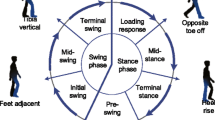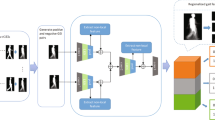Abstract
Gait-based pedestrian identification has important applications in intelligent surveillance. From anatomical viewpoint, the physical uniqueness of human gait is physiological discriminative of individuals. Therefore, in theory, like fingerprint and face, gait is used as a biometric for pedestrian identification. However, gait-based pedestrian identification still faces multiple challenges due to a vast diversity of walking conditions and complex acquisition environment during data collection. In this paper, through combining the nonlinear dimensionality reduction by using gait manifold and the temporal feature of gated recurrent unit (GRU) together, we propose a novel gait-based pedestrian identification framework. Firstly, we design a temporal enhancement module to construct a series of frame-by-frame gait trend energy images (ff-GTEIs), which represents spatiotemporal gait characteristics and does not reduce the number of samples. Secondly, a supervised locally linear embedding (LLE) dimensionality reduction scheme is proposed, which generates a low-dimensional gait manifold for each pedestrian and transforms all ff-GTEIs into corresponding gait manifold space. Thirdly, a new pedestrian identification network based on residual GRU is proposed, which is able to identify a person by comprehensively considering the similarity between its gait and corresponding gait manifold. Finally, a series of comparative experiments are carried out based on well-known gait datasets, the experimental results show that the proposed framework for pedestrian recognition in this paper exceeds most existing methods, and has achieved an average correct recognition rate 97.4% and 99.6% based on the open-accessed gait dataset CASIA Dataset B and OU-ISIR LP dataset, respectively.









Similar content being viewed by others
Data Availability
The datasets generated during and/or analysed during the current study are available from the corresponding author on reasonable request.
References
Sarkar S, Phillips PJ, Liu Z, Vega IR, Grother P, Bowyer KW (2005) The humanID gait challenge problem: data sets, performance, and analysis. IEEE Trans Pattern Anal Mach Intell 27(2):162–177. https://doi.org/10.1109/TPAMI.2005.39
Wu Z, Huang Y, Wang L, Wang X, Tan T (2017) A comprehensive study on cross-view gait based human identification with deep CNNs. IEEE Trans Pattern Anal Mach Intell 39(2):209–226. https://doi.org/10.1109/TPAMI.2016.2545669
Chao H, Wang K, He Y, Zhang J, Feng J (2021) GaitSet: Cross-view gait recognition through utilizing gait as a deep set. IEEE Trans Pattern Anal Mach Intell 44(7):3467–3478. https://doi.org/10.1109/TPAMI.2021.3057879
Wang Y, Chen Y, Bhuiyan M, Han Y, Zhao S, Li J (2017) Gait-based human identification using acoustic sensor and deep neural network. Futur Gener Comput Syst 86:1228–1237
Takemura N, Makihara Y, Muramatsu D, Echigo T, Yagi Y (2019) On input/output architectures for convolutional neural network-based cross-view gait recognition. IEEE Trans Circ Syst Video Technol 29(9):2708–2719. https://doi.org/10.1109/TCSVT.2017.2760835
Wang X, Yan WQ (2020) Human gait recognition based on frame-by-frame gait energy images and convolutional long short-term memory. Int J Neural Syst 30(01):1950027. https://doi.org/10.1142/S0129065719500278
He R, Hu B-G, Zheng W-S, Kong X-W (2011) Robust principal component analysis based on maximum correntropy criterion. IEEE Trans Image Process 20(6):1485–1494. https://doi.org/10.1109/TIP.2010.2103949
Turaga P, Veeraraghavan A, Srivastava A, Chellappa R (2011) Statistical computations on Grassmann and Stiefel manifolds for image and video-based recognition. IEEE Trans Pattern Anal Mach Intell 33(11):2273–2286. https://doi.org/10.1109/TPAMI.2011.52
Tenenbaum J, Silva V, Langford J (2001) A global geometric framework for nonlinear dimensionality reduction. Science 290:2319–23. https://doi.org/10.1126/science.290.5500.2319
Roweis S, Saul L (2001) Nonlinear dimensionality reduction by locally linear embedding. Science (New York) 290:2323–6. https://doi.org/10.1126/science.290.5500.2323
Belkin M, Niyogi P (2003) Laplacian eigenmaps for dimensionality reduction and data representation. J Neural Comput 15:1373–1396
Chen J, Ma Z (2011) Locally linear embedding: A review. Int J Pattern Recognit Artif Intell 25:985–1008. https://doi.org/10.1142/S0218001411008993
Li H, Trocan M (2019) Sparse reconstruction of ISOMAP representations. J Intell Fuzzy Syst 37:1–17. https://doi.org/10.3233/JIFS-179359
Cao Y, Chen D-R (2012) On the regularized Laplacian eigenmaps. J Stat Plan Infer 142:1627–1643. https://doi.org/10.1016/j.jspi.2012.02.022
**ao X, Zhou Y (2019) Two-dimensional quaternion PCA and sparsePCA. IEEE Trans Neural Netw Learn Syst 30(7):2028–2042. https://doi.org/10.1109/TNNLS.2018.2872541
Wang Q, Gao Q, Gao X, Nie F (2018) ℓ2,p -norm based PCA for image recognition. IEEE Trans Image Process 27 (3):1336–1346. https://doi.org/10.1109/TIP.2017.2777184
Jiang J, Ma J, Chen C, Wang Z, Cai Z, Wang L (2018) Superpca: A superpixelwise PCA approach for unsupervised feature extraction of hyperspectral imagery. IEEE Trans Geosci Remote Sens 56(8):4581–4593. https://doi.org/10.1109/TGRS.2018.2828029
Wang X, Wang J, Yan K (2018) Gait recognition based on Gabor wavelets and (2D)2PCA. Multimed Tools Appl 77:1–17. https://doi.org/10.1007/s11042-017-4903-7
Bae J (2012) Gait analysis based on a hidden Markov model. In: International Conference on Control, Automation and Systems, pp 1025–1029
Chen C, Liang J, Zhao H, Hu H, Tian J (2009) Factorial HMM and parallel HMM for gait recognition. IEEE Trans Syst Man Cybern Part C Appl Rev 39(1):114–123. https://doi.org/10.1109/TSMCC.2008.2001716
Martinez-Hernandez U, Awad MI, Mahmood I, Dehghani-Sanij AA (2017) Prediction of gait events in walking activities with a Bayesian perception system. In: International Conference on Rehabilitation Robotics (ICORR), pp 13–18
Chen K, Wu S, Li Z (2020) Gait recognition based on GFHI and combined hidden Markov model. In: International Congress on Image and Signal Processing, BioMedical Engineering and Informatics (CISP-BMEI), pp 287–292
Yuan W, **. In: International Symposium on Computational Intelligence and Design (ISCID), vol 1. pp 64–67
Deepak NA, Hariharan R, Sinha UN (2013) Analysing gait sequences using latent Dirichlet allocation for certain human actions. In: National Conference on Computer Vision, Pattern Recognition, Image Processing and Graphics (NCVPRIPG), pp 1–4
Nithyakani P, Shanthini A, Ponsam G (2019) Human gait recognition using deep convolutional neural network. In: International Conference on Computing and Communications Technologies (ICCCT), pp 208–211
Sepas-Moghaddam A, Etemad A (2021) View-invariant gait recognition with attentive recurrent learning of partial representations. IEEE Trans Biom Behav Identity Sci 3(1):124–137. https://doi.org/10.1109/TBIOM.2020.3031470
Jaychand Upadhyay P, Gonsalves PT, Paranjpe R, Purohit H, Joshi R (2020) Biometric identification using gait analysis by deep learning. In: IEEE International Conference for Innovation in Technology (INOCON), pp 1–4
Zou Q, Wang Y, Wang Q, Zhao Y, Li Q (2020) Deep learning-based gait recognition using smartphones in the wild. IEEE Trans Inf Forensic Secur 15:3197–3212. https://doi.org/10.1109/TIFS.2020.2985628
Chen X, Luo X, Weng J, Luo W, Li H, Tian Q (2021) Multi-view gait image generation for cross-view gait recognition. IEEE Trans Image Process 30:3041–3055. https://doi.org/10.1109/TIP.2021.3055936
Hagui M, Mahjoub MA (2016) Hidden conditional random fields for gait recognition. In: International Image Processing, Applications and Systems (IPAS) pp 1–6
Han J, Bhanu B (2006) Individual recognition using gait energy image. IEEE Trans Pattern Anal Mach Intell 28(2):316–322. https://doi.org/10.1109/TPAMI.2006.38
Amrutha J, Remya Ajai AS (2018) Performance analysis of backpropagation algorithm of artificial neural networks in verilog. In: IEEE International Conference on Recent Trends in Electronics, Information Communication Technology (RTEICT), pp 1547–1550
Yu S, Tan D, Tan T (2006) A framework for evaluating the effect of view angle, clothing and carrying condition on gait recognition. In: International Conference on Pattern Recognition (ICPR’06), vol 4. pp 441–444
Iwama H, Okumura M, Makihara Y, Yagi Y (2012) The OU-ISIR gait database comprising the large population dataset and performance evaluation of gait recognition. IEEE Trans Inf Forensic Secur 7(5):1511–1521. https://doi.org/10.1109/TIFS.2012.2204253
Zheng S, Zhang J, Huang K, He R, Tan T (2011) Robust view transformation model for gait recognition. In: International conference on image processing, pp 2073–2076
Acknowledgment
This work was supported in part by Key Research and Development Plan of Zhejiang Province (No.2021C03151) and Natural Science Foundation of Zhejiang Province (No. LY20F020018). The authors would like to thank the Institute of Automation, Chinese Academy of Sciences for providing CASIA gait datasets, and also the Institute of Scientific and Industrial Research, Osaka University for providing the OU-ISIR gait datasets.
Author information
Authors and Affiliations
Corresponding author
Additional information
Publisher’s note
Springer Nature remains neutral with regard to jurisdictional claims in published maps and institutional affiliations.
Rights and permissions
About this article
Cite this article
Wang, X., Yan, W.Q. Human identification based on Gait Manifold. Appl Intell 53, 6062–6073 (2023). https://doi.org/10.1007/s10489-022-03818-4
Accepted:
Published:
Issue Date:
DOI: https://doi.org/10.1007/s10489-022-03818-4




